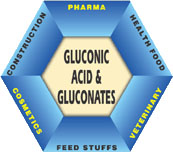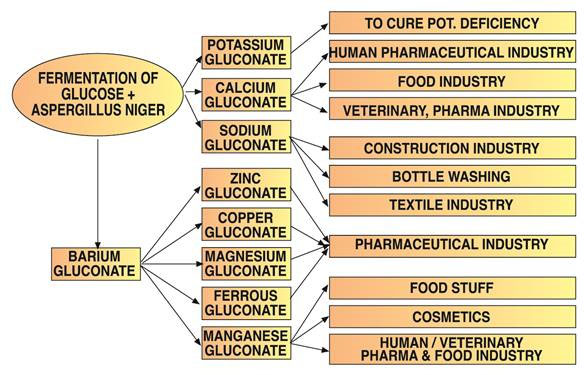- Research & Development
- Recognitions
-
Downloads
- Fermented Glucose / Sucrose
- Company Profile
- Research data of Prathista Agri in-put products
- Pharma & Food Ingredients as per FSSAI, Govt. of India
- Organic Food Preservatives
- Fermented Flours as Natural Mold Inhibitors
- Prathista 4G Fertilizers
- Product Catalogues
- National & International Research Publications / proceedings
- Home
- Corporate Info
- Profile
- Team Prathista
- Prathista Virgin
- Future Business Vision
- Corporate Videos
- Photo Gallery
- Prathista Product Launch function and Facilitation to Dr. Qazi at Marigold Hotel (30th May 2013)
- Professionals Visit to Prathista establishment & Interaction with International Personalities
- Inauguration of Newly Developed Facilities at Prathista Industries Limited (31st May 2013)
- Prathista Infrastructure Facilities
- Skoch Award for Team
- Interaction with team Prathista at route level
- Prathista Collaboration
- Punjab team visit to Prathista unique Biotechnology based manufacturing facilities
- Inauguration of Globally biggest Fermented flours
- Success Stories
- Life-Line Products
- Organic Acids & Salts (APIs)
- Lacto Gluconate Salts
- Anti-Microbial products & formulations
- Prathista LANOS - Organic Cheese / Paneer Lactate
- Prathista NOS - Organic Anti-Microbial Formulation
- Multi-purpose & Bio available (Vegan based) Chelated mineral salts
- Other Products
- Infrastructure
- Contact Us

Gluconic Acid & Salts
- Home
- Life-line Products
- Organic Acids & Salts (APIs)
- Gluconic Acid & Salts

Gluconate Based Technology Products
The company has set up first of its kind of industrial fermentation facilities consisting of 1 million liters capacity fermentation establishment and suitable downstream processing facilities for Calcium Gluconate (bulk drug) production, based on CSIR (RRL, Jammu) process technology. These facilities were inaugurated by Dr. R A Mashelkar, DG - CSIR on 5th May 2004..
-
Glucono Delta-Lactone
-
Glucono Delta-Lactone
Glucono Delta-Lactone has a chemical formula of C6H10O6 with a molecular weight of 178.14 g/mol. It is a white crystalline powder and almost odorless. It has a slightly sweet taste, then bitter, and finally sours. The melting point of Glucono Delta-Lactone is 150 - 154℃ (decomposition). It is freely soluble in water (60 g/ mL of water), sparingly soluble in ethyl alcohol (1g / 100 mL of water), and almost insoluble in ether. It can be hydrolyzed into the balanced solution of Glucono Delta-Lactone and Gluconic acid in aqueous solution. The pH of 1% Glucono Delta-Lactone solution will be 2.5 - 3.5.
Glucono Delta-Lactone is a multifunctional food additive with following applications
- Acts as a protein coagulant
- Sour agent
- Swelling agent
- Preservative
- Flavoring agent
- Chelating agent
- Colour retention agent etc.
- It is widely used in food, pharmaceuticals, cosmetics, electroplating, polishing, metal cleaning, plastics and resin modifying as well as a commodity chemical.
-
-
Gluconic Acid
-

Specifications
Gluconic acid is an organic compound with a molecular formula of C6H12O7 and condensed structural formula HOCH2 (CHOH)4 COOH. It is one of the 16 stereoisomers of 2, 3, 4, 5, 6-pentahydroxyhexanoic acid commonly known as dextronic acid.
In aqueous solution at neutral pH, gluconic acid forms the Gluconate ion. The salts of gluconic acid are known as "Gluconates". Gluconic acid, gluconate salts, and gluconate esters occur widely in nature as these compounds arise from the oxidation of glucose. Some drugs are injected in the form of gluconates.
The chemical structure of gluconic acid consists of a six-carbon chain with five hydroxyl groups terminating in a carboxylic acid group. In aqueous solution, gluconic acid exists in equilibrium with its cyclic ester glucono delta-lactone. Gluconic acid occurs naturally in fruits, honey, Kombucha tea, and wine.
ProductionGluconic acid can be obtained by chemical synthesis, on account of its superior selectively; however microbial production is highly preferred. A series of microorganisms under the genus of Aspergillus, Penicillin, Gluconobacter, Pseudomonas, Phytomonas, Achromobacter, Klebsiella, Zymomonas, and Acetobacter have already been used for microbial production of gluconic acid. A yeast-like fungal culture, Aureobasidium pullulans was also known for the production of small amounts of gluconic acid.
For microbial production of gluconic acid, predominantly, Aspergillus niger or Gluconobacter suboxidans are in industrial use. Aspergillus niger is difficult to handle, as it causes clogging and unsuitable for the continuous production. This is mainly due to the drawback that cell growth and gluconic formation would not be possible simultaneously. On the other hand, Gluconobacter has been found to produce a relatively large quantity of keto acids during production. These keto acids complicate the processing and isolation of the pure gluconic acid.Applications
Gluconic acid is a multifunction carbonic acid and it is used extensively in various applications with its physiological and chemical characteristics.
- As a food additive, it acts as an acidity regulator.
- In metal cleaning formulations for rust and stains (mineral deposits) removal on metal surfaces.
- Used in metal finishing baths for aluminum etching and in metal plating processing baths.
- In high-performance metal degreasers.
- In textile industries as stabilizers for dye baths and bleach baths.
- In leather tanning and dyeing processes.
- Mixed in mortar and concrete admixes as a retarder as well as a plasticizer (after neutralization with alkali).
Used as a raw material for the manufacturing of gluconate salts with minerals like Calcium, Sodium, Potassium, and Manganese etc.


Different Salts of Gluconic acid
The gluconate anion chelates with Ca2+, Fe2+, Al3+ as well as other metals and forms salts. In 1929, Horace Terhune Herric first developed a process for producing the salt by fermentation. Various gluconate salts with their applications are as follows.
-
-
Calcium Gluconate
-
Calcium is an essential element of tissues and blood, which constitutes approximately 10 mg/ 100 mL. The average daily requirement of calcium is 500 mg, however higher amounts are necessary during the periods of growth. Calcium Gluconate has the molecular formula of C12H22CaO14.H2O with 448.40 g/mol of molecular weight.
- Calcium Gluconate has various applications in pharmaceutical, food, and feed industries
- It is used to treat acid burns caused by hydrofluoric acid.
- Used as a cardioprotective agent in hyperkalemia and in magnesium toxicity.
- As an emulsifier, stabilizer, or thickener, or to control pH levels of some foods.
- Added to foods for its health value. E.g. baby foods, juices, biscuits, and health foods etc.
- Incorporated in pudding preparation for preventing the sour taste obtained by other salts.
- In the treatment of hypocalcemia in cases of milk fever and gross tetany in cattle.
-
-
Potassium Gluconate
-
Potassium Gluconate is administered in all cases of potassium deficiencies or in danger of potassium depletion in conditions like diabetic acidosis, diarrhea, and vomiting etc. Potassium chloride is also used but potassium gluconate is highly preferred because of its slight saline taste.
- To stabilize blood pressure
- In Regulation of heart rhythms
- To control the nervous system and muscle contractions
- Regulates water balance and alkalinity of body fluids
- As a nutrition enhancer in dairy products
-
-
Sodium Gluconate
-
It is a sodium salt of gluconic acid with a molecular formula of C6H11O7Na. It has a molar mass of 218.14 g/mole. Sodium gluconate has many applications in as below
- As a detergent in bottle washing to control heavy metals and harness ions.
- In alkaline derusting.
- As an additive in the construction industry in cement retarder and water reducer for concrete.
- In the textile industry as a sequestering agent for heavy metal ions and to remove iron deposits.
- In the paper industry.
-
-
Manganese Gluconate
-
Manganese gluconate can be readily formulated into tablets for the treatment of manganese deficiency. It is primarily added to vitamins and mineral dietary preparations to supplement the normal intake in the case of inadequate levels. In feed Stuff Manganese Gluconate is added to animals feed to assure adequate manganese ions for balanced diet development.
Manganese gluconate has applications in Pharma, Food, and Feed sectors.
Various other gluconates of Zn, Fe, Quinine also have important pharma applications as below
- Zinc Gluconate injections are used to neuter male dogs.
- Iron Gluconate injections have been in use to treat anemia.
- Quinine Gluconate is a salt of gluconic acid and quinine. It is used as an intramuscular injection in the treatment of malaria.
-

